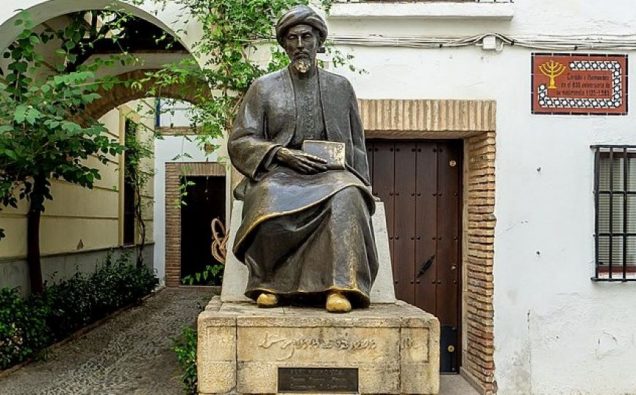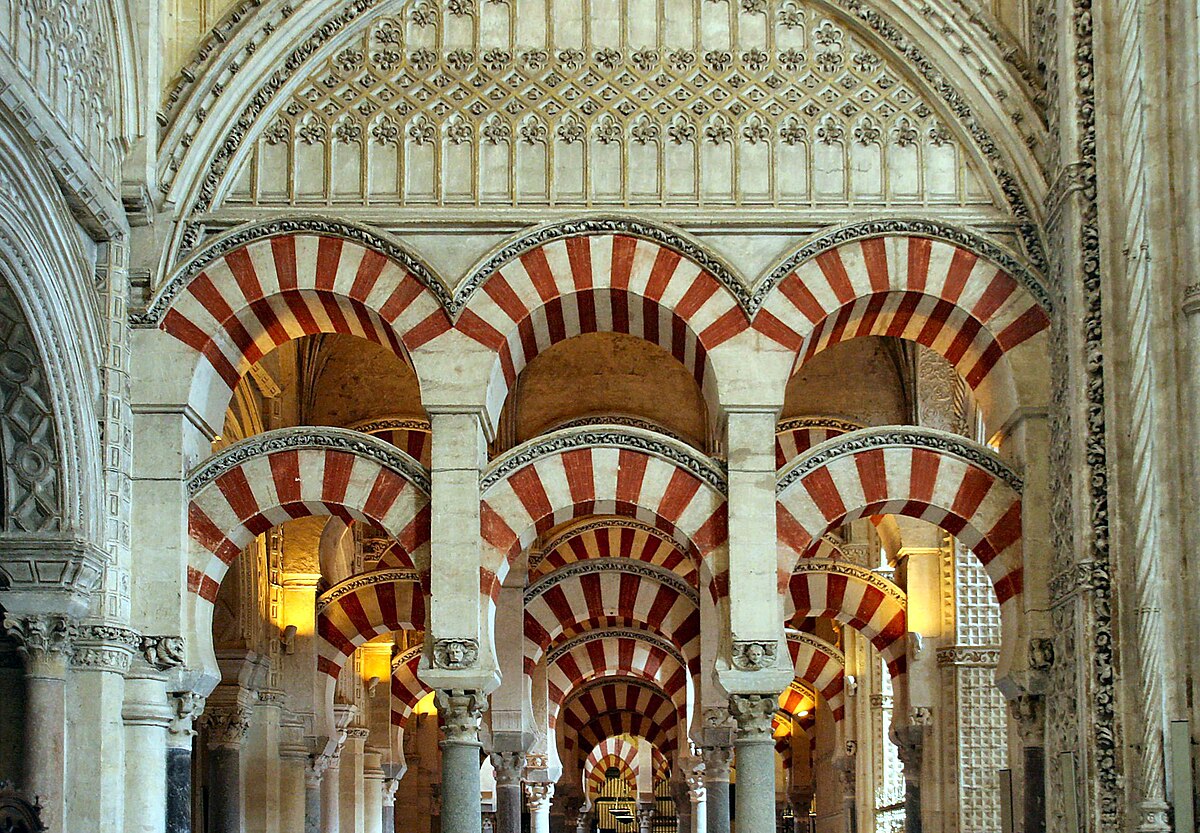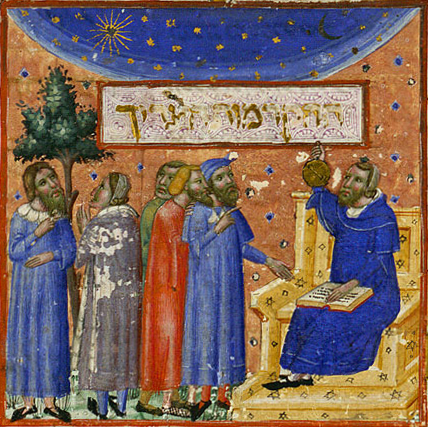
When we hear the phrase “the Dark Ages,” we most likely picture a version of Europe far from modernity. However, as I’ve learned throughout my Islam in Europe course at American University, taught by Ambassador Akbar Ahmed, this phrase could not be more misleading, as scholars living through the concurrent ‘Golden Age of Islam’ in the Iberian Peninsula gifted some of the most influential contributions in science and philosophy that directly shaped our modern society. Their world was comparable to ours in that pandemics and religious conflict were prominent issues. The difference being that in the Kingdom of Andalusia, or Al-Andalus, the three Abrahamic religions lived, studied, and worked together in amity.
But what made Andalusia a safe haven for religions to live a harmonious intercultural life? History tends to avoid examining this period even though the world could benefit from doing so. One of the great examples of a towering figure that should be looked to today for wisdom, who supported the Andalusian way of life, was rabbi Moses ben Maimon, also
known as Maimonides or the Rambam. Joel Kraemer, an admired professor, had managed to condense the life of the exceptional Rambam in his book, Maimonides: The Life and World of One of Civilization’s Greatest Minds. The Rambam was a profound Jewish scholar, who not only impacted the Jewish community for generations with his philosophy but helped shape the Golden Age of Islam. He is the figure we should envision as the “the man who can bring peace between Jews and Muslims” as my professor, Ambassador Ahmed proposes in his article about the Rambam.

A view of the Mosque of Cordoba Credit: Jim Gordon, / Wikimedia Commons
In his biography of the Rambam, Kraemer takes the reader through the Souks, mosques, shops, and streets of Córdoba in the early thirteenth century. Kraemer describes a bond of coexistence or convivencia alive in Andalusia between Muslim and Jewish communities. His book identifies how connections between the two religions were built largely through shared language and culture. The Arabic language was the primary driver of this relationship and helped dismantle the barrier between Muslims and Jews in Córdoba, the capital of Andalusia. Jews worked and spoke in Arabic, and many of the most celebrated Jewish texts were originally written in Arabic, including the Rambam’s. It was common for Jews to study the Quran, learn how Muslims interpreted their texts, use the same techniques for the Tanach, as well as develop Jewish songs that imitated the sound of Arabic music. Working to bridge language barriers may be the most important lesson we can learn from the Rambam and other Jews in Andalusia, as language allows different groups to connect, create cultural bonds, and share a dialogue.
The Rambam, while living in Córdoba, was undoubtedly influenced by Muslim civilization. He educated himself in both the Jewish spiritual world and secular studies, illustrating how the Torah and human wisdom were pillars of his life. This unique understanding that Rabbis and spiritual leaders should not only study religious literature but should attempt work in other jobs as well, was a grounding facet of Maimonides’ personhood. This was a lesson the Rambam learned from his contemporary Muslim philosophers during the Golden Age, where scholars were not limited to learning one subject or focus on a specific field of work. The early concept of a true renaissance figure, inspired by the Greeks, began taking root in Andalusia well before the actual renaissance. Countless religious leaders today regard the work of average men as below their intellectual and spiritual pursuits. The Rambam may regard leaders with this stance as, “a person who doesn’t work at all.” Working as a physician exposed the Rambam to a variety of people and experiences. This contributed to his intelligence and empowered him to mold the relations he made with Muslim, Christian, and Jewish communities – truly making him the applicable candidate as “the man who can bring peace.”

A depiction of Maimonides teaching students about the ‘measure of man’ in an illuminated manuscript Public Domain/ Wikimedia
Ambassador Ahmed puts it simply that, “the (Rambam) is a gateway for the Jewish people into the understanding of Judaism.” The Rambam, adversely to other Rabbis and Jewish leaders, prioritized life over death. As Kraemer writes, “he emphasized that the holy mitzvot (Jewish laws) were given so one could live by them, and not to die because of them.” The Rambam wanted to make sure Judaism was kept alive through the difficulties they intermittently underwent in Iberia. He instructed Jews to act like Muslims on the outside and keep true to their religion in their heart and at home. The significance of this was his support for controversial nuances that accepted any Jew back to Judaism, even after changing religion. This was (and still is) considered by many, a huge sin, both in Islam and Judaism. However, through his writing, the Rambam managed to send a message of hope that enables the unity and strength of the Jewish community, making him a creator of bridges and opportunities for life in the Jewish world.
Too many people today are afraid to open their minds and interact with cultures different from their own. Some parents raise their children in a sheltered religious environment in which everyone thinks alike, preventing their child from understanding the world. It is sometimes understandable, in cases where people who have known oppression attach themself to asabiyyah, Ibn Khaldun’s concept of social solidarity within tribes. I believe this is the root of modern issues between Judaism and Islam, as many leaders are afraid of educating their people, believing that a society that approves of inclusion is destined for disintegration from within. This is clearly a huge misconception, as we know for thousands of years Jews and Muslims lived side-by-side and it had never led to the extinction of either. In fact, the opposite had occurred in Córdoba, when both religions cooperated it led to world-changing advancements in the fields of arts and sciences.
My intention in providing the given examples of Andalusia and the Rambam’s life is to highlight our class’s main objective: that by looking back at history, to a time when coexistence was a common reality that produced prosperity, we could work on achieving a similar existence today. Adapting parts of this ancient culture could be the solution to re-building the broken bridge. By discussing commonalities, we are creating a dialogue of understanding. Instead of being reluctant to different religions, we should humanize, accept, and learn from them. I have learned more about an impactful Jewish figure like the Rambam in my Islamic studies course run by a Muslim professor than during my entire Jewish education. So, what are we so afraid of?






